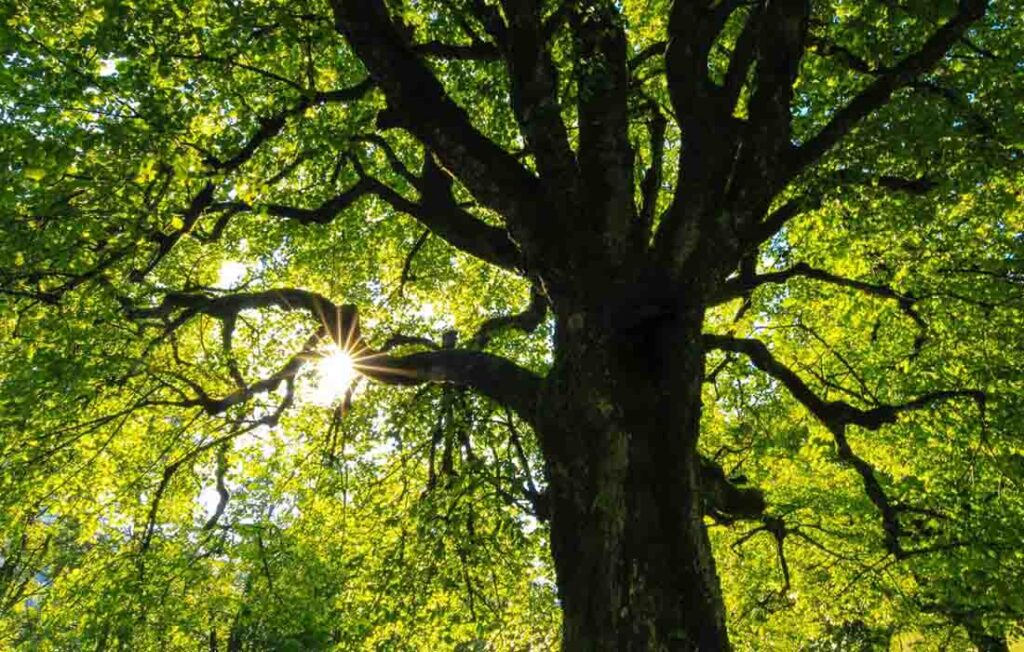The effects of climate change have grown increasingly prevalent over the past couple years. From apocalyptic “megafires” across the globe to record-breaking hurricanes in the Gulf coast to incessant pandemics, we now understand the negative consequences (both anticipated and unforeseen) are occurring earlier than we hoped. Fortunately, recent scientific research from the International Journal of Environmental Research and Public Health highlights an opportunity to invest in our future by investing in trees!
For many, it’s been ingrained in us from a young age that trees are good—they help us breathe, they bear fruit we can eat. (After all, there’s a reason The Giving Tree by Shel Silverstein has sold more than 10 million copies worldwide since its publication.) But what are the benefits that may not be commonly known? And how can they help us make a positive difference when it comes to our climate?
The Many Benefits of Trees
Clean Air
Trees are often referred to as the “lungs of the planet” because they provide so much oxygen to life on Earth. They do this by cleaning the air around us. Trees remove a variety of air pollutants, such as greenhouse gasses, which protects human health and limits the effects of climate change. In fact, one study showed that trees and forests in the U.S. removed 17.4 million tons of air pollution in 2010, which saved the country $6.8 billion in health costs and helped the population avoid 850 deaths.
Carbon Storage
Burning fossil fuels puts heat-trapping greenhouse gases, specifically carbon dioxide, into our atmosphere, increasing Earth’s temperature and contributing to climate change. In contrast, trees protect us from the devastating effects of climate change by sequestering, or storing, carbon dioxide. A 2021 study conducted by One Tree Planted determined that a single adult tree can absorb approximately 22 pounds of CO2 in a given year. (This is slightly less than the 48 pounds number that, somewhat inaccurately, has been circling the internet for a while.) Even then, multiply this by the 228 billion trees in the U.S. alone, and that’s… a lot of carbon storage!
In New York State alone, trees store 1.9 billion metric tons of carbon dioxide.
Reduced Crime
Tree cover has also been associated with lower crime rates. Increasing tree populations in urban areas is shown to lead to reductions in the rates of violent, domestic, and property crimes. How exactly do trees make such a big difference? The answer is often situation-specific, but experts have identified several overarching patterns. Clean, healthy green spaces often inspire increased community involvement; citizens are proud of these spaces and are more involved in taking care of them. As a result, the upkeep of these spaces signals that residents are actively involved in their communities, dissuading acts of crime.
Clearer Thinking
Numerous studies show that trees enhance cognitive function, improving our mental capacity to acquire and understand knowledge. For example, one study out of the School of Forest Resources at Chungbuk National University in South Korea showed that after walking in a forest, participants completed tasks 7 seconds faster on average than before their walks. In contrast, participants who walked in urban landscapes did not complete tasks more quickly.
Boost Immune Function
Flu-season. It happens every year and only seems to be increasing in duration. But did you know planning a trip to a local forest might be the added boost your immune system needs? A study in Tokyo showed that visiting a forest enhanced immune functions in participants. Even better, this positive effect lasted for over seven days after the initial visit.
Improve Mental Health
Globally, mental illness is on the rise. In the United States alone, over 50 million individuals live with mental illness. Fortunately, spending time with trees can help individuals cope with mental health struggles in an affordable way. Another Japanese study found that individuals who walked in the forest exhibited less tension, anxiety, anger, and hostility than those who walked in the city.
Temperature Cooling
Trees reduce the levels of sun exposure, which provides a natural cooling effect. Cities with limited tree cover experience an urban heat island effect due to climate change, which can raise city temperatures by 1-7° F(EPA). Shade provided by trees reduces this effect. Did you know that parks can cool their surroundings by up to 1.7°F?
Reduce Stress
Feeling stressed out? Go hug a tree. No, seriously—turns out, it helps! Research suggests that spending time in forests reduces stress. For example, an analysis of residents of Berlin, Germany showed that living in close proximity to a forest increased individuals’ capacity to cope with stress.
Social Connection
Especially after the COVID-19 pandemic, social isolation has been an ongoing problem for many individuals. Just one minute of staring up at a tree has been shown to increase social behaviors and emotions. Basically, the awe that we feel from the nature around us can influence positive prosocial (a.k.a. the intent to benefit others) behavior.
As illustrated by the research, trees promote human and environmental health while reducing the harmful effects of climate change—many times in ways we don’t even realize. At least, not right away.
Trees clean the air around us, store important greenhouse gases like carbon dioxide, and reduce crime rates. They support our immune systems and mental health, while keeping us cool. They reduce our stress, and even encourage social connection between us.
When we take a moment to think about the amazing benefits of these giant (and sometimes ancient) plants, it truly is awe-inspiring. It becomes very clear that we need to put more energy into the protection, preservation, and regrowth of this essential resource. Because an investment in trees is an investment in our own health.




